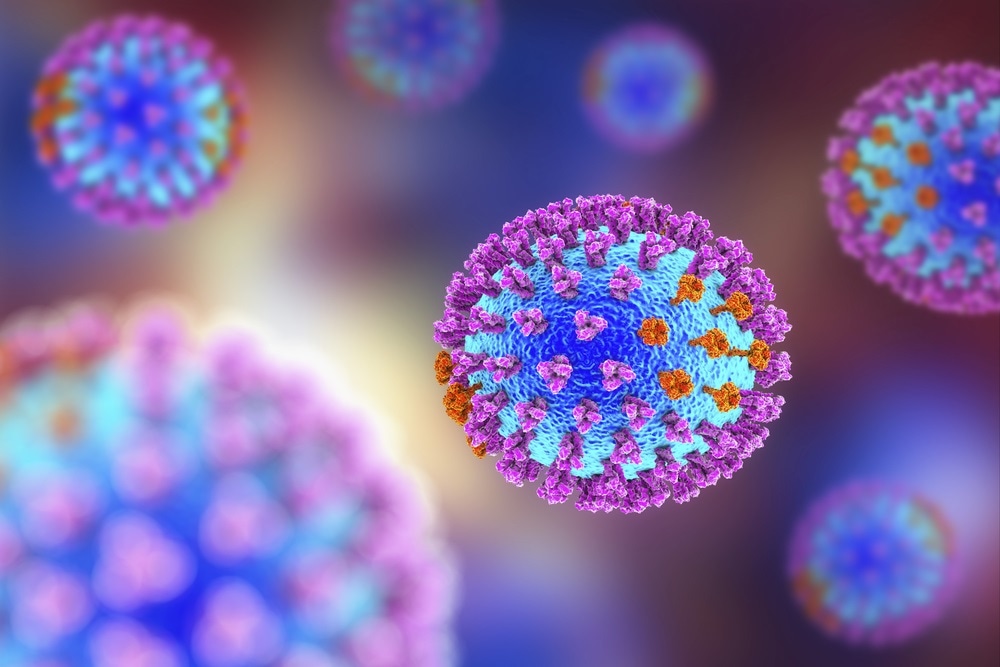A virus infects a host and transforms it into a factory to make more copies of itself.
 Image Credit: Kateryna Kon / Shutterstock.com
Image Credit: Kateryna Kon / Shutterstock.com
Scientists have now demonstrated that a large class of viruses, such as the influenza viruses, expand their genomes by stealing genetic signals from their hosts.
This discovery has been described in a study recently published online and in print in the Cell journal on June 25th, 2020.
The cross-disciplinary collaborative research was headed by scientists at the Global Health and Emerging Pathogens Institute at Icahn School of Medicine at Mount Sinai in New York, and at the MRC-University of Glasgow Centre for Virus Research in the United Kingdom.
The cross-disciplinary group of virologists examined a large family of viruses called segmented negative-strand RNA viruses (sNSVs), which include dangerous and widespread pathogens of domesticated animals, humans, and plants including Lassa virus—responsible for causing Lassa fever—and the influenza viruses.
The researchers demonstrated that viruses can create a wealth of formerly undetected proteins by stealing genetic signals from their hosts.
The scientists dubbed them UFO—Upstream Frankenstein Open reading frame—proteins, since they are encoded by stitching the viral sequences and host together. There was a lack of understanding regarding the presence of these types of proteins before this study.
These UFO proteins can modify the course of viral infection and could be leveraged for vaccine purposes.
The capacity of a pathogen to overcome host barriers and establish infection is based on the expression of pathogen-derived proteins. To understand how a pathogen antagonizes the host and establishes infection, we need to have a clear understanding of what proteins a pathogen encodes, how they function, and the manner in which they contribute to virulence.”
Ivan Marazzi, PhD, Study Corresponding Author and Associate Professor, Department of Microbiology, Icahn School of Medicine, The Mount Sinai Hospital
Viruses need to feed certain instructions to the machinery because they are incapable of building their own proteins. This machinery builds proteins in their host’s cells. These pathogens are known to do this via a process known as “cap-snatching.”
This process involves splicing the end from one of the cell’s own protein-encoding messages—a messenger RNA or mRNA—and subsequently extending that sequence with a copy of one of the own genes of the viruses. This provides a hybrid message to be read.
For decades we thought that by the time the body encounters the signal to start translating that message into protein (a ‘start codon’) it is reading a message provided to it solely by the virus. Our work shows that the host sequence is not silent.”
Ivan Marazzi, PhD, Study Corresponding Author and Associate Professor, Department of Microbiology, Icahn School of Medicine, The Mount Sinai Hospital
The scientists demonstrated that since viruses (sNSVs) make hybrids of host mRNAs with their own genes, they can create messages with additional, host-derived start codons—a process known as “start snatching.”
This allows translating of formerly unsuspected proteins from the hybrid host-virus sequences. The scientists further demonstrated that these unique genes are expressed by influenza viruses and possibly a large number of other viruses.
The immune system can perceive the product of these hybrid genes, which can modulate virulence. More studies are required to figure out this new group of proteins and what are the implications of their pervasive expression by various RNA viruses that cause pandemics and epidemics.
Viruses take over their host at the molecular level, and this work identifies a new way in which some viruses can wring every last bit of potential out of the molecular machinery they are exploiting. While the work done here focusses on influenza viruses, it implies that a huge number of viral species can make previously unsuspected genes.”
Ed Hutchinson, PhD, Study Corresponding Author and Research Fellow, MRC-University of Glasgow Centre for Virus Research
According to the scientists, they will continue their study to interpret the distinct functions played by the unsuspected genes.
“Now we know they exist, we can study them and use the knowledge to help disease eradication. A large global effort is required to stop viral epidemics and pandemics, and these new insights may lead to identifying novel ways to stop infection,” Marazzi concluded.
Source:
Journal reference:
Yuin Ho, J. S., et al. (2020) Hybrid Gene Origination Creates Human-Virus Chimeric Proteins during Infection. Cell. doi.org/10.1016/j.cell.2020.05.035.